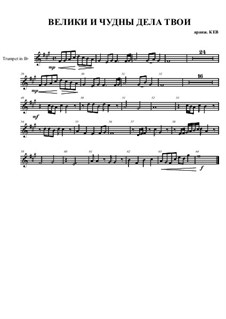Veliki I Chudni Dela Tvoi Noti Dlya Fortepiano

To bring you the best content on our sites and applications, Meredith partners with third party advertisers to serve digital ads, including personalized digital ads. Those advertisers use tracking technologies to collect information about your activity on our sites and applications and across the Internet and your other apps and devices. You always have the choice to experience our sites without personalized advertising based on your web browsing activity by visiting the, the, and/or the, from each of your browsers or devices. To avoid personalized advertising based on your mobile app activity, you can install the. You can find much more information about your privacy choices in.
The Moonwalkers Who Could Have Been In the three and a half years between July, 1969 and December, 1972, twelve people walked on the moon. That fact is now well known. What is less well know is that there were fourteen others that could equally well have done so.
Even if you choose not to have your activity tracked by third parties for advertising services, you will still see non-personalized ads on our sites and applications. By clicking continue below and using our sites or applications, you agree that we and our third party advertisers can: • transfer your data to the United States or other countries; and • process and share your data so that we and third parties may serve you with personalized ads, subject to your choices as described above and in.
• • Prep 20 m • Cook 40 m • Ready In 2 h • Mix apricots and lemon juice in a large pot; add sugar. Slowly bring to a boil, stirring until sugar dissolves. Cook and stir until apricot mixture thickens, about 25 minutes. Remove from heat and skim foam if necessary. • Meanwhile, prepare jars, lids, and rings by cleaning and sterilizing in dishwasher or boiling water bath. Leave lids in simmering water until ready to seal jars.

• Ladle hot jam into hot sterilized jars, leaving about 1/4 inch of space on top. Run a knife or a thin spatula around the insides of the jars after they have been filled to remove any air bubbles. Wipe the rims of the jars with a moist paper towel to remove any food residue. Top with lids and screw on rings.
• Place a rack in the bottom of a large stockpot and fill halfway with water. Bring to a boil, then carefully lower the jars into the pot using a holder. Leave a 2-inch space between the jars. Pour in more boiling water if necessary until the water level is at least 1 inch above the tops of the jars. Bring the water to a full boil, cover the pot, and process for 15 minutes. • Remove the jars from the stockpot and place onto a cloth-covered or wood surface, several inches apart, until cool. Once cool, press the top of each lid with a finger, ensuring that the seal is tight (lid does not move up or down at all).
Store in a cool, dark area. Lkorableva runicheskie zagovori i apokrificheskie molitvi islandcev.
The Moonwalkers Who Could Have Been The Moonwalkers Who Could Have Been In the three and a half years between July, 1969 and December, 1972, twelve people walked on the moon. That fact is now well known. What is less well know is that there were fourteen others that could equally well have done so. Most people know the story of Apollo 13, which was sent to the moon with the intention of landing.
But that accounts only for two of the other possible moonwalkers. Who were the other twelve, and what basis do we have for saying that they were possible moonwalkers? That is the purpose of this page. People who said no to a possible moonwalk Frank Borman According to both Slayton and Borman, Borman elected to retire rather than retrain on the LM in 7 months for Apollo 11 (at the time, Borman had no LLRV/LLTV experience). He informed Slayton of his intentions before flying Apollo 8, so he was not actually offered the Apollo 11 mission, but Slayton says that he would have considered sending the Apollo 8 crew on Apollo 11 if Borman had been willing. Torrent aquasoft slideshow. Borman further says that he was not interested in flying any mission after Apollo 11 because his primary motivation was flight testing rather than science. Borman never flew in space again after Apollo 8, his second mission.